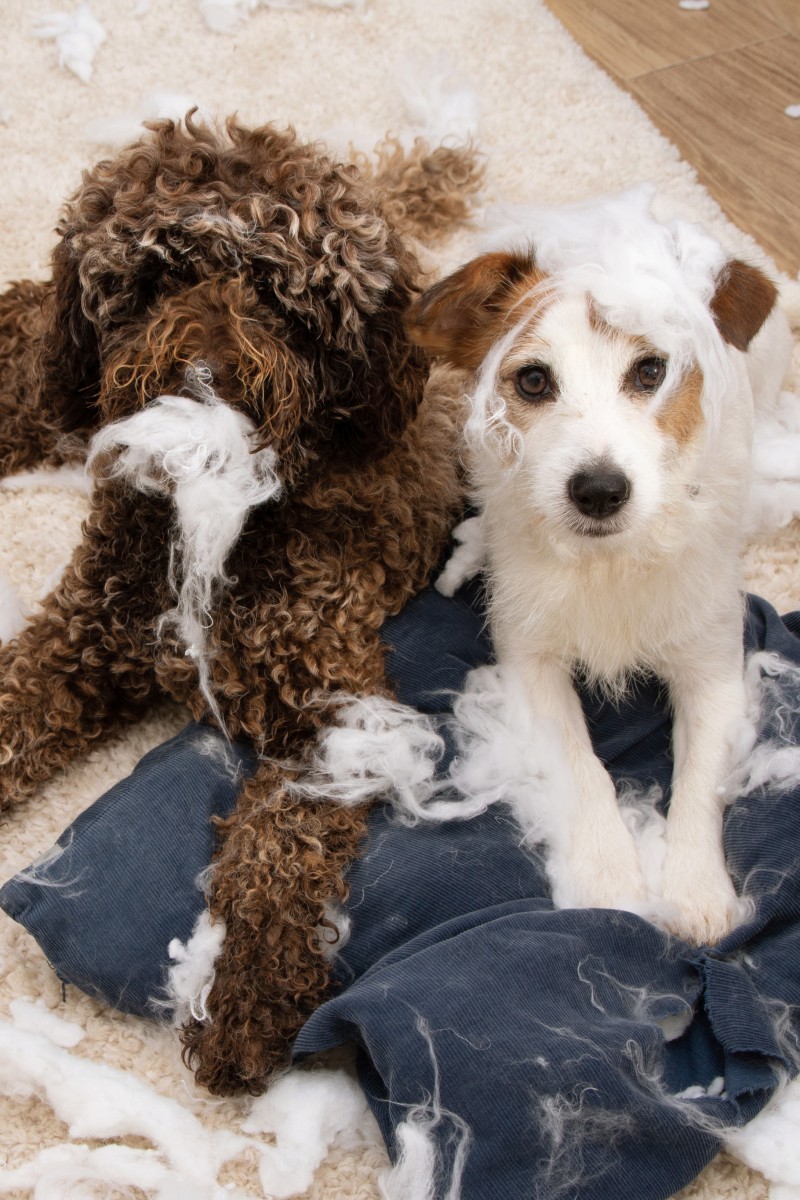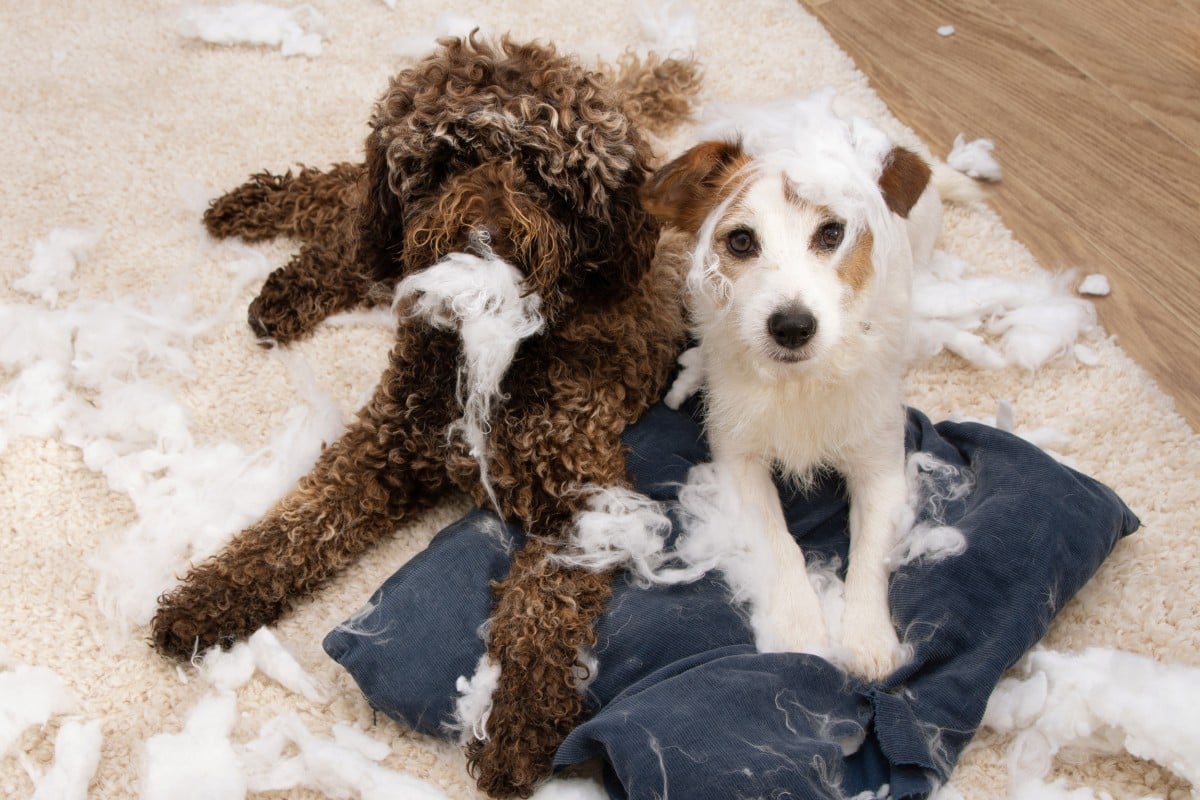
Separation anxiety in dogs: how to help your pet cope with being alone at home
- Separation anxiety is a condition where a dog becomes extremely stressed when they are away from its owner
- Here’s what you can do to help your canine companion
 Dogs with separation anxiety exhibit distress and behaviour problems when they are left alone. Photo: Shutterstock
Dogs with separation anxiety exhibit distress and behaviour problems when they are left alone. Photo: ShutterstockPandemic-related shutdowns in 2020 gave many people who believed they did not have time for pets the push they needed to adopt.
But with many offices haltingly bringing employees back and schools opening up post-Covid, pet owners and people who work with dogs are starting to grapple with animals’ separation anxiety and other problems.
Nihcole Adams, a dog walker and sitter in Castaic, California, has had an uptick in new clients who are also new to dog ownership. She has been fielding requests for walks, feedings and boardings. But some pets she is taking in are struggling with being alone or socialising with other dogs.
“Dogs who are isolated or not socialised before 16 weeks of age are more likely to develop behaviour problems later on,” Rachel Malamed, a veterinary behavioural specialist, said.
The stakes are serious. Malamed said behaviour problems are a leading cause of relinquishment and euthanasia.
Seeking help from a qualified professional early on can help keep pets in the home, improve pet welfare and repair the human-animal bond, Malamed said.
Depending on your pup’s situation, you can seek help from certified dog trainers, a veterinarian or pet sitters. Here’s how to tell if a dog is experiencing separation anxiety, tips on what owners can do at home and beyond, and resources.
Understanding your pet
Malamed said she is seeing a lot of pets with separation anxiety as well as other fears and phobias – including the fears of people, noises, walks and other animals.
These fears, she said, can be due to a lack of early socialisation caused by the pandemic.
Ingrid Komisar said they also can result from a lack of training as well as genetic predisposition. Komisar – a certified trainer for Calm Canine Academy, a virtual dog-training service – said the coronavirus lockdowns halted in-person trainings for many dogs and their owners. It also stopped many pets from simply seeing and interacting with other humans and dogs.
Anxiety in pets can manifest itself in a number of ways. Physical changes can look like loss of appetite, vomiting, diarrhoea or house-soiling. Behavioural changes to be aware of may include hiding and avoidance, shaking, tail tucking, ears back, licking the lips and yawning, not taking treats readily and not following commands. In some cases pets will become aggressive to household members, unfamiliar people or other animals.
Do not wait to see if the problem will go away. Most behaviour problems worsen if left unaddressed.
“The first thing that people should do when they notice any behavioural or physical signs or change, especially those that are sudden or uncharacteristic for their pet, is to consult their vet to make sure that there are no underlying medical reasons for these behaviours,” Malamed said.
How can a veterinarian help?
Karen Sueda, a veterinary specialist in the behaviour department at VCA West Los Angeles Animal Hospital, said illness can affect your pet’s behaviour, so it is important to rule out physical causes first.
“For example, many diseases can cause house-soiling, and a dog that is in pain may pant, vocalise and appear anxious,” Sueda said.
A vet visit allows the doctor to ask specific questions to make an accurate behavioural diagnosis and create a treatment plan if a physical cause has been ruled out, she said.
If the problem behaviour is mild, your veterinarian may refer you to a trainer who uses positive-reinforcement training techniques. Sueda said that if the problem is more concerning, the doctor might refer you to a veterinary behaviourist – a specialist in treating behavioural issues in pets.
Veterinarians also may prescribe medications that reduce anxiety. Lowering anxiety, Sueda said, allows the pet to learn new behaviours and coping strategies through positive reinforcement.
Training techniques
If your veterinarian recommends a trainer for your dog’s separation anxiety, Komisar advises finding a certified professional. The American Veterinary Society of Animal Behaviour has tips on how to choose a trainer based on speciality.
Komisar acknowledges that a dog dealing with separation anxiety can be incredibly distressing for the owner too.
But separation anxiety is treatable.
“If we put in the time, if we put in the effort, it is possible to see success and to see [your pet] start to be comfortable with alone time,” she said.
How much time and effort? Komisar said she usually tells clients that the process can take months.
Through Calm Canine Academy, she starts with suspending absences – so if you have to go to work or school and do not have someone who can stay with your dog, hire a pet sitter.
Next, Komisar works with the owner to understand at what point the dog begins to panic. If it’s within 10 minutes of the owner leaving home, then they’ll start by training the dog to be comfortable being alone for less than 10 minutes and work their way up.
What can you do at home
If your dog is showing mild signs of separation anxiety or if you are waiting for your scheduled veterinarian appointment, Ralf Weber, a certified dog trainer based in Corona, shared tips on what you can do at home.
-
For five minutes a day, everyone in the home ignore the dog. The animal may whine or bark but eventually will entertain itself or lie down. Once the dog is comfortable at five minutes, gradually increase the time.
-
Having your dog crate-trained is valuable. A crate is a dog’s own comfortable space, away from the owner. It’s also needed when transporting your pet, leaving them at a kennel or if they have to stay at the veterinarian’s office.
-
Similar to Komisar’s technique of leaving your pet alone for however long the pet is comfortable with, Weber recommends gradually increasing the dog’s alone time. But do not rush the process; go at your dog’s pace.